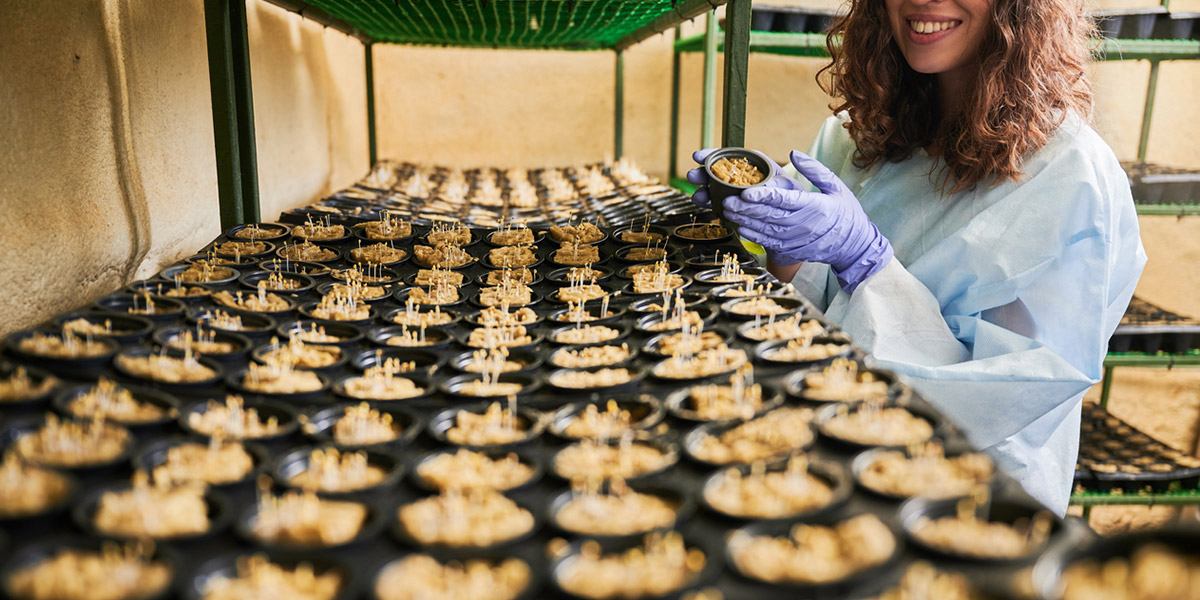
With prices rising across the industry and material shortages coming into sharp focus, many businesses ask themselves one key question before growing their crop: how can seed starting racks reduce waste in indoor farming? In the latest blog from Schaumburg Specialties, we look at how businesses can cut waste by using seed starting racks (also known as germination racks) as well as other indoor farming essentials.
Unlike any other sector of industry, indoor farming; vertical farming and hydroponic farming processes have been viewed by many as a key solution to the world’s growing challenges around food security and material shortages. Beyond these waste-cutting benefits, hydroponic processes and equipment are widely praised for helping indoor farmers to reduce the wastage of available ground space.
Whilst indoor and vertical farming offers an amazing range of benefits, companies typically deal with a number of waste challenges, including:
- Loss of water;
- Loss of soil & fertilizer;
- Wastage of crops due to poor germination; and
- Wastage of available growing space.
Whilst these challenges present a negative impact to our natural environment, they also represent a significant financial drain for companies hoping to make a profit in this growing sector. So: how can products like seed starting racks and germination shelves make a difference? Keep reading to find out!
How Seed Starting Racks and Germination Shelves Can Reduce Waste in Vertical and Indoor Farming
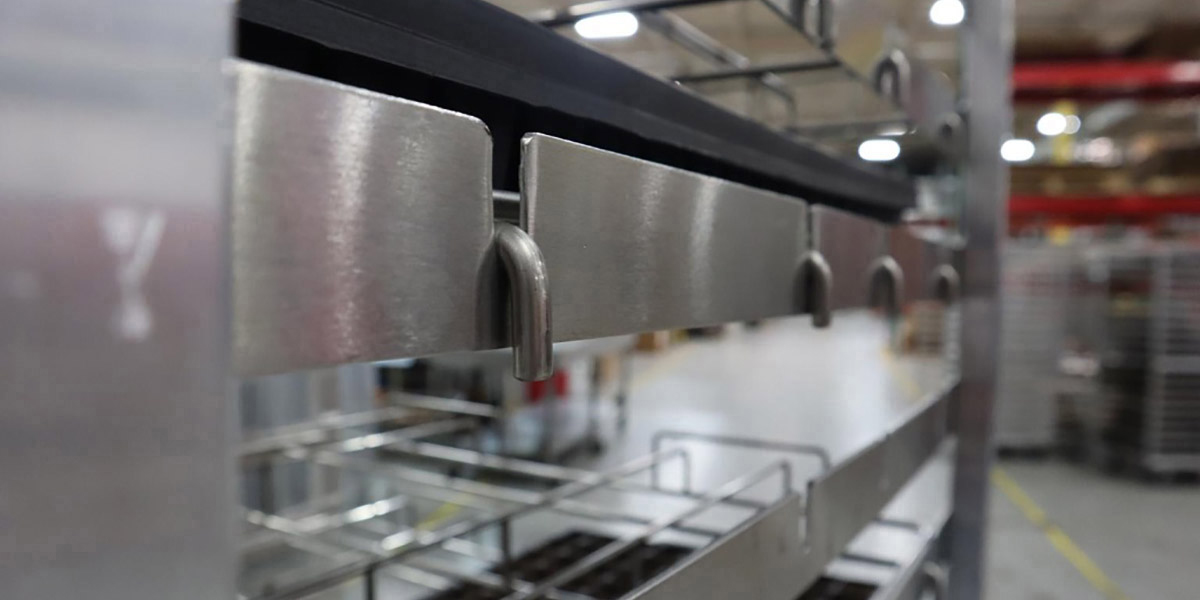
The waste challenges faced by America’s indoor farming sector are clear. But how can the right choice of equipment, such as seed starting racks and germination shelves tackle these problems? Let’s take a look at each challenge and how products like ours can help:
Reducing Loss of Water with Germination Racks
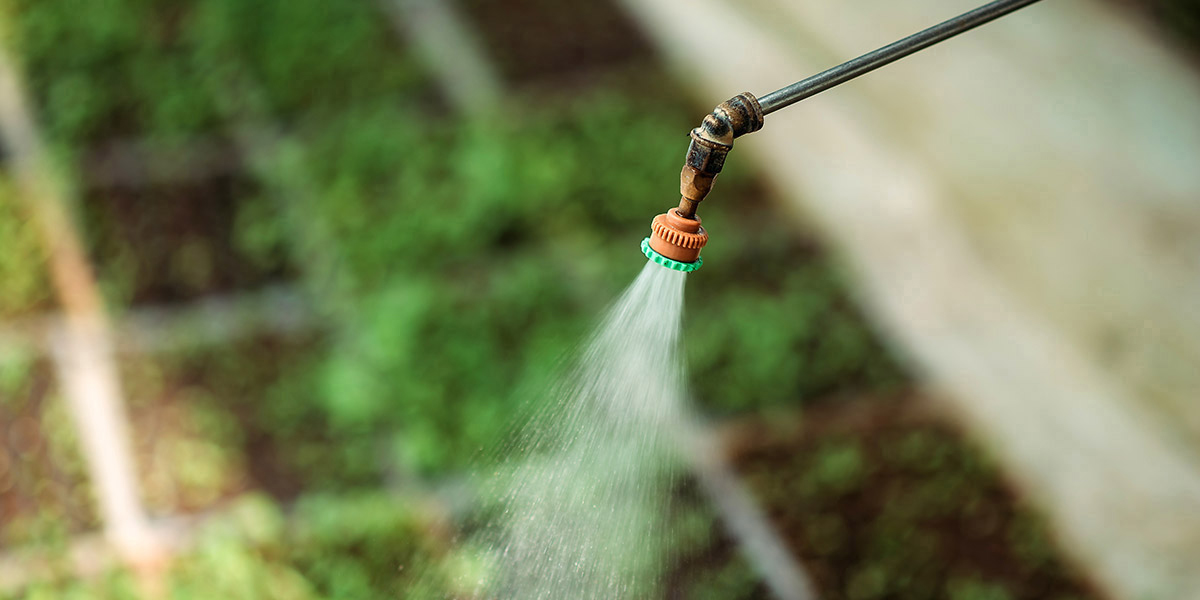
It’s a cold hard fact that farming largely depends on one of society’s most valuable commodities: water. The farming sector as a whole accounts for 70 percent of the world’s water use, with representatives from the World Water Forum highlighting most of that usage as wasteful.
This places pressure on natural ecosystems, as well as placing pressure on the wallets of businesses throughout the length & breadth of America. At this point you’re probably asking yourself: “Okay, but how can a mere germination rack or seed starting rack make a difference?”. It’s simple – check out our point below
- Reduced run-off: Unlike traditional farming infrastructure, seed starting shelves provide an effective basin that prevents the run-off of waste water, collecting that water in highly-resistant (often stainless steel) trays. This brings the added benefit of reducing water pollution due to agricultural fertilizer triggering algae blooms in our estuaries, lakes and rivers.
By using supportive infrastructure like seed starting racks and germination shelves, indoor farmers can cut water consumption by up to 95%. We like the sound of that!
Preventing Wastage of Fertilizer with Seed Starting Racks
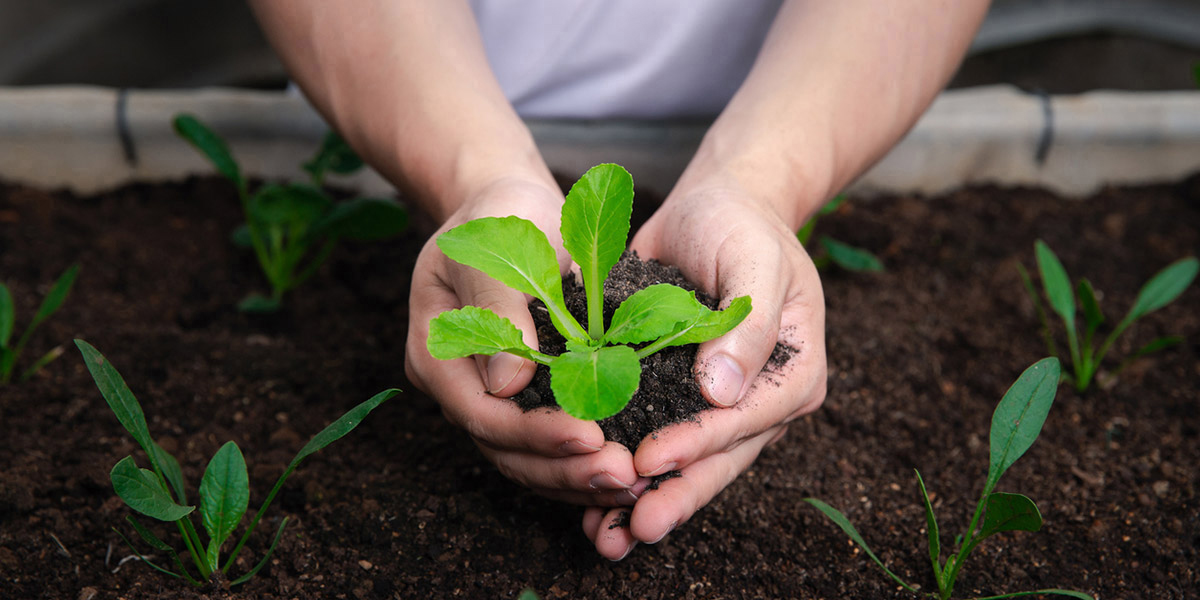
As any major playing in indoor farming will know, fertilizer is expensive stuff. Not only is it expensive – it’s also incredibly harmful to our environment and waterways. With this challenge in-mind, it’s vital that indoor growers take steps to reduce fertilizer waste by using the right kind of equipment.
So – what kind of equipment can tackle this problem head-on? You guessed it: seed starting racks. Here’s how seed starting racks can nip fertilizer waste issues in the bud:
- Stabilized flats: Indoor farming operations are essentially portable greenhouses. Whether you’re growing tomatoes or lettuce, it’s an absolute certainty that you’ll have to move your crops around, depending on the levels of light and humidity they need at various stages of the grow cycle. This requires a smooth level of mobility that won’t have your seeds and fertilizer scattering all over your production floor. Whilst many options out there haven’t innovated to meet this challenge, the pros at Schaumburg Specialties are two steps ahead. Flats on germination trays tend to jiggle and shake around. We’ve tackled this by supporting the flat on a shelf, with rails inserted down the middle to give more support to the top of the structure. We’ve even included a wire grid to go all the way across, providing a more stable centre of gravity.
Everybody loves those lightbulb moments, right? Those moments that make you say: “Eureka!”. Well – we’ve made some simple innovations to stop soil being wasted and getting into places it shouldn’t using a little bit of common sense and some basic metal fabrication skills. Smart, huh?
Preventing Wastage of Crops with Seed Starting Shelves
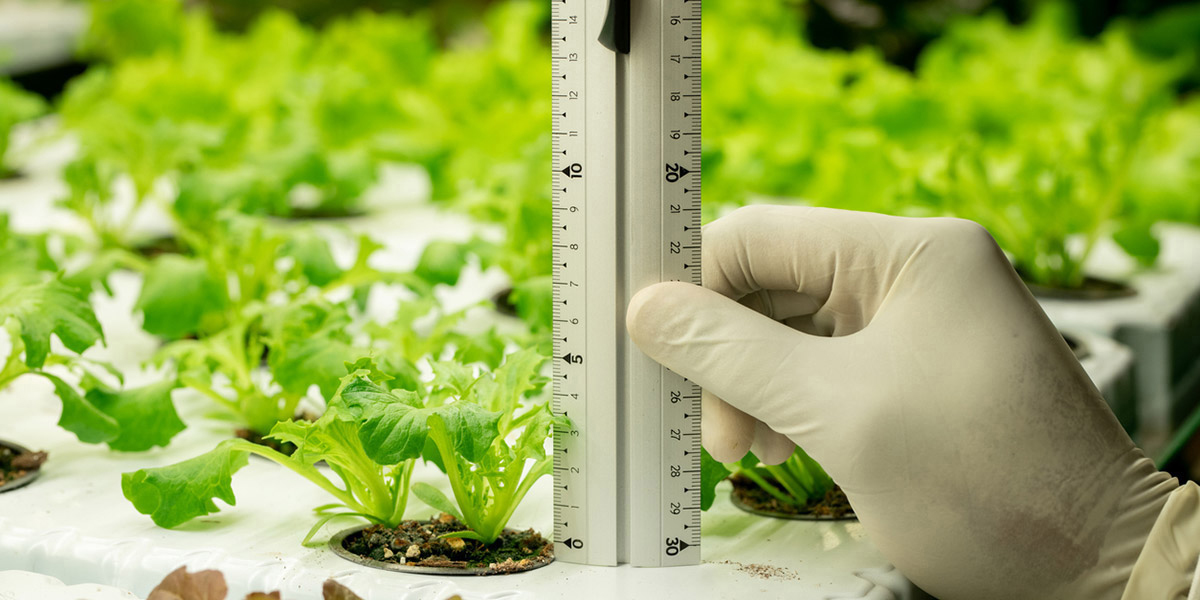
It’s a no-brainer that crops need lots of light, food and varying levels of humidity and temperature to yield a decent harvest. However, using any old kind of farming equipment won’t necessarily facilitate those kinds of conditions.
Don’t worry: germination racks and seed starting shelves are here to come to your rescue. Here’s just a couple of points on how to reduce crop wastage with the indoor farming essentials:
- Controllable climates: When you use indoor farming equipment like seed germination shelves, you don’t need to worry about getting good weather or a decent level of rainfall from mother nature. Constructed using heat-resistant, corrosion-resistant and water-resistant materials, these products fit in perfectly with climate-controlled environments like indoor farms.
- Improved yield: Today’s indoor farming industry operates according to a strict set of standards and established guidelines. In a nutshell, only the best will do. By using a high quality seed germination rack or seed starting trolley, you can take steps towards ensuring a strong yield, meaning you’ll have to dispose of less substandard products per harvest. But how? It’s simple: by stacking crops vertically on a germination shelf, fewer farm pesticides are required which can often compromise the quality of the final crop. What’s more, taking this approach also ensures that both your staff and local wildlife are exposed to less toxic substances.
A major source of waste is represented in the substandard products that vertical and indoor farmers are forced to dispose of. With a seed germination shelf or rack, you can cut that rate of disposal significantly.
How to Stop Wasting Floor Space by Using Seed Starting Shelves
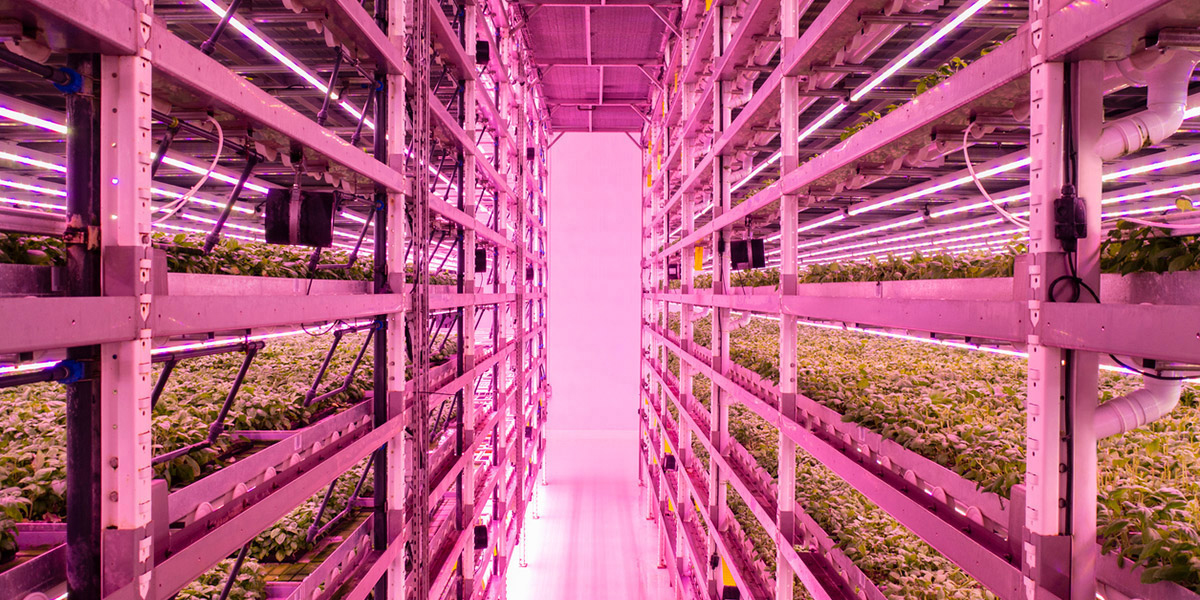
The question of ‘waste’ isn’t only about wasting water, crops and fertilizer. Another key wastage issue surrounds available space, with traditional farming methods typically requiring large open spaces on which to grow crops effectively. But how can vertical farming equipment like seed starting trolleys and germination infrastructure tackle this problem?
Here’s a hint: the clue’s largely in the name – ‘vertical farming’. Here’s one very important point that explains what we mean here:
- A vertical footprint: Germination racks and seed starting shelves are multi-levelled pieces of equipment that allow farmers to grow craps in stacked layers, typically spaced 24 to 36 inches apart. The equivalent of 60 acres of farming product can be grown in one climate-controlled warehouse. Indeed, these can be stacked at six (or more) levels higher. It doesn’t get any more productive than that!
It’s true: unlike any other piece of farming infrastructure, seed starting shelves and germination racks don’t just make the most out of your horizontal space – they use your vertical space to its ultimate potential, too.
Schaumburg Specialties: Indoor Farming Shelving and Racks for the 21st Century
Here at Schaumburg Specialties, we’ve become famous in Chicago and beyond for our range of racks, carts and shelving through our well-established
SHOPCraft, MEDICraft and INTELLICraft product selections. Now, we’re using over 30 years of metal fabrication experience to help indoor farming companies achieve better harvests with every grow. To get started with a customised seed starting rack or germination shelf, submit your drawings for a quote or contact us to discuss your unique growing requirements.